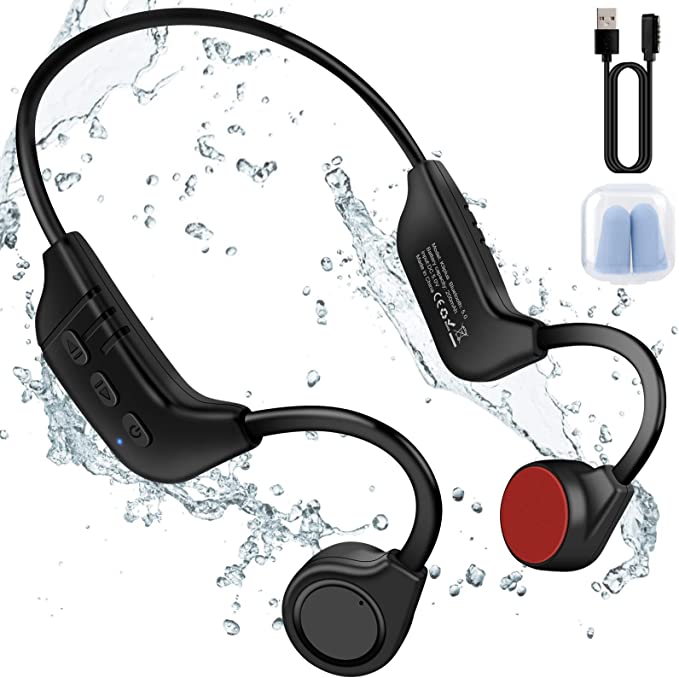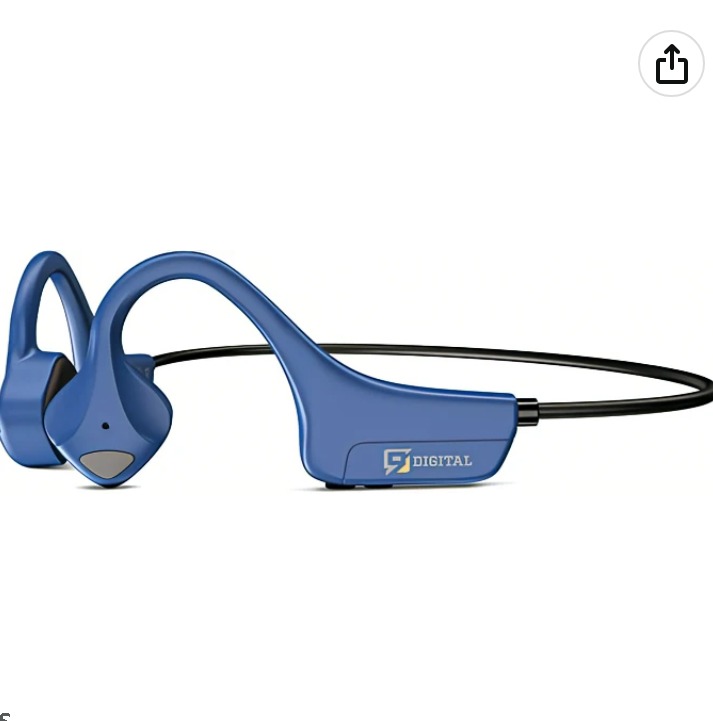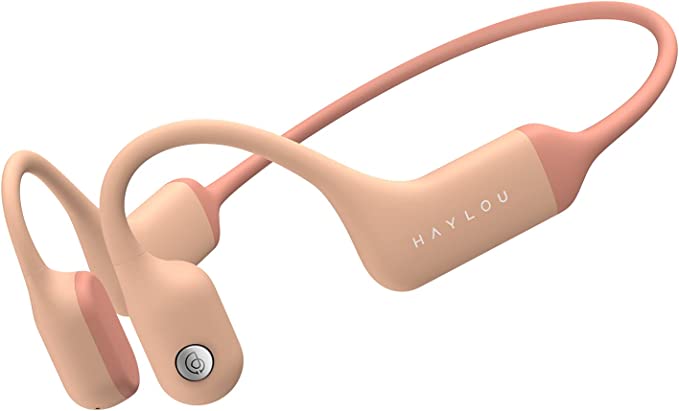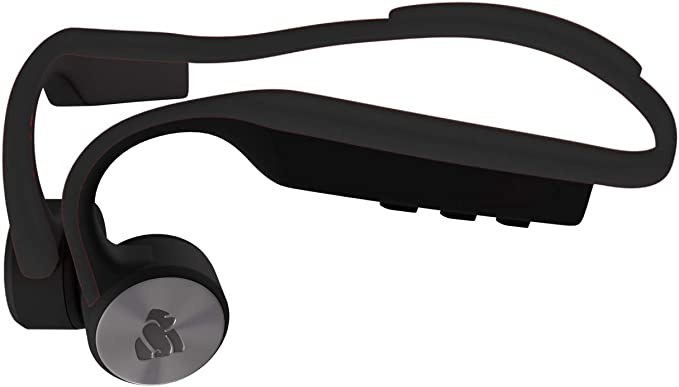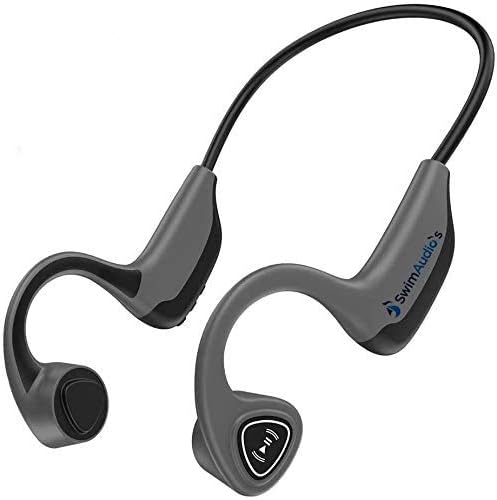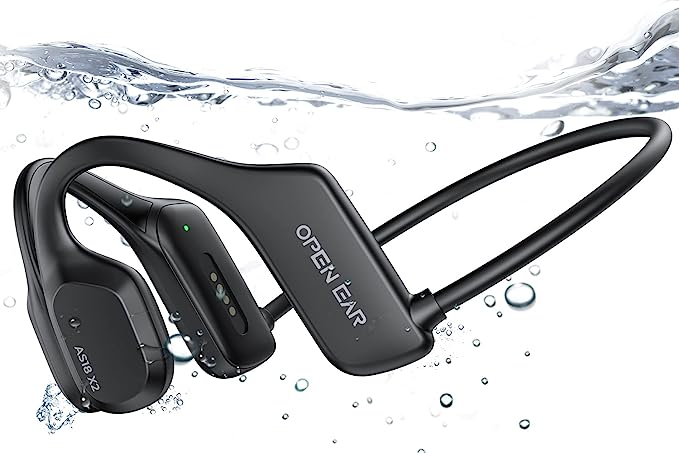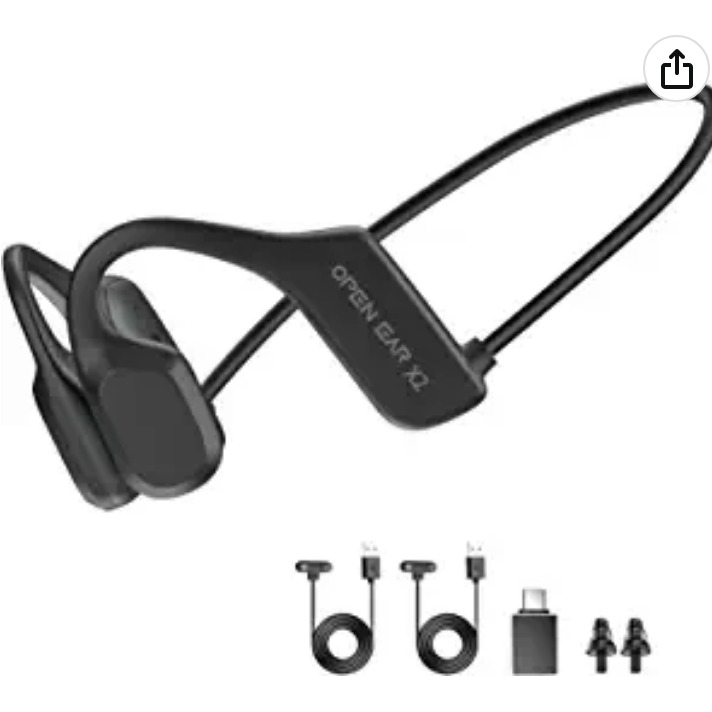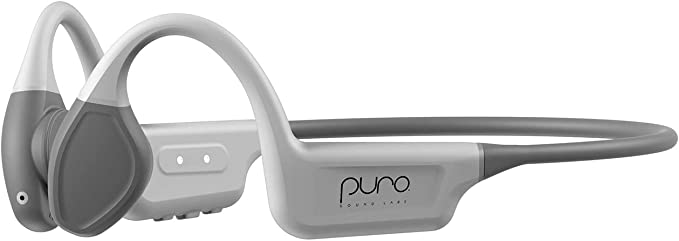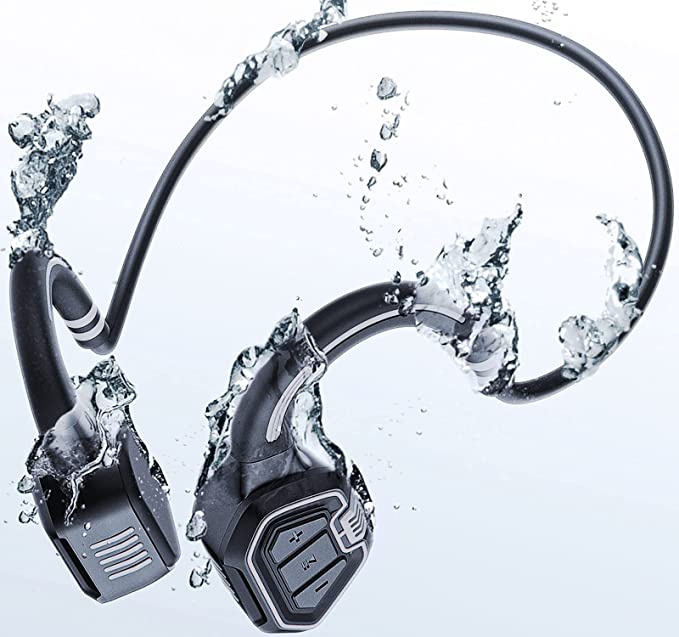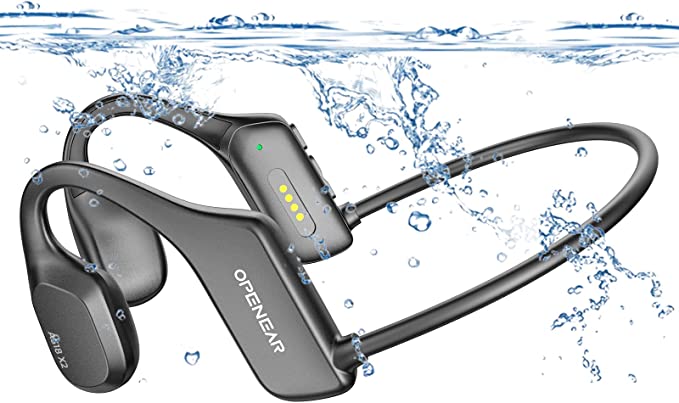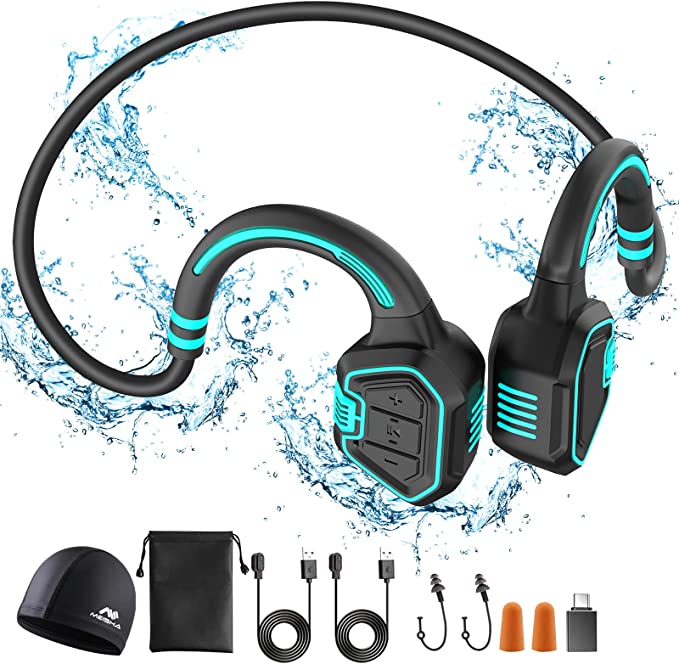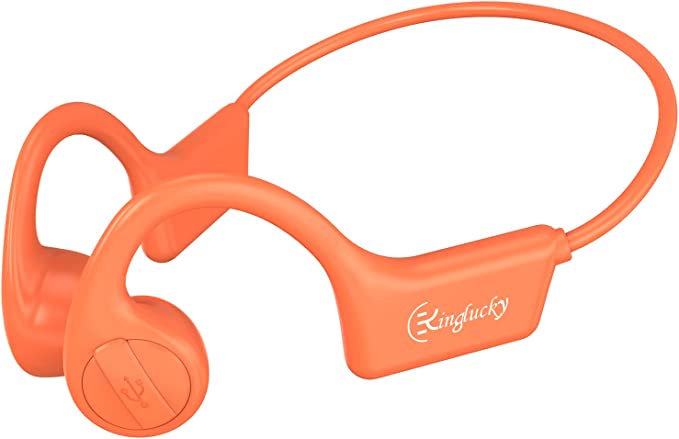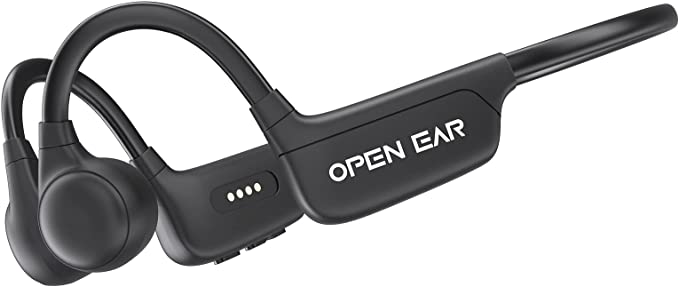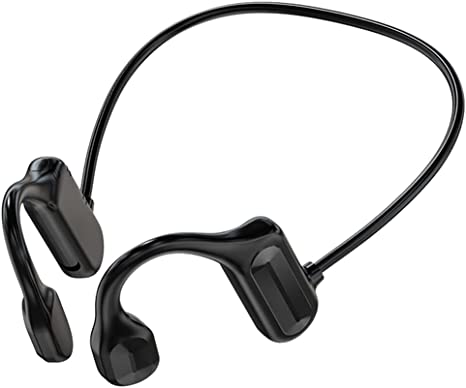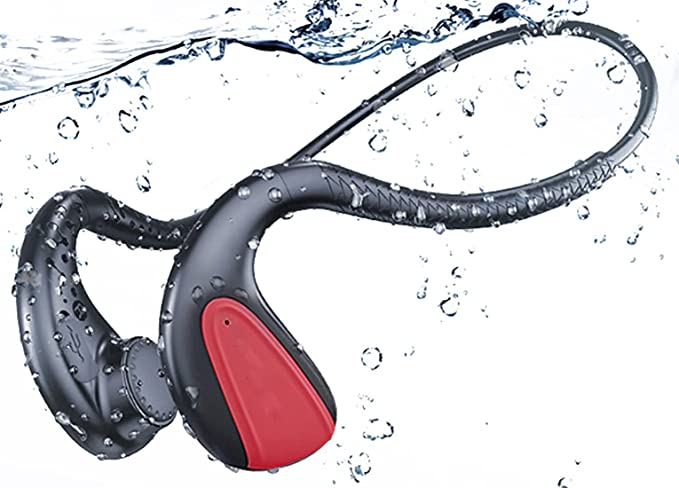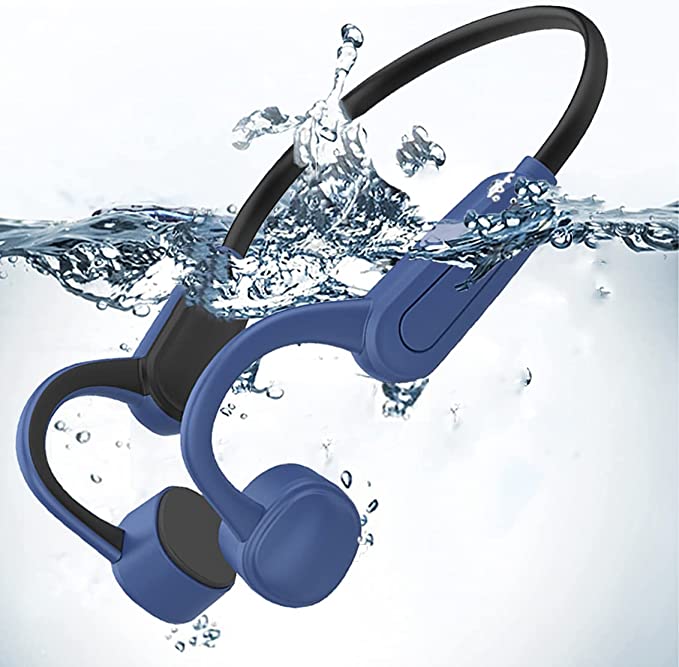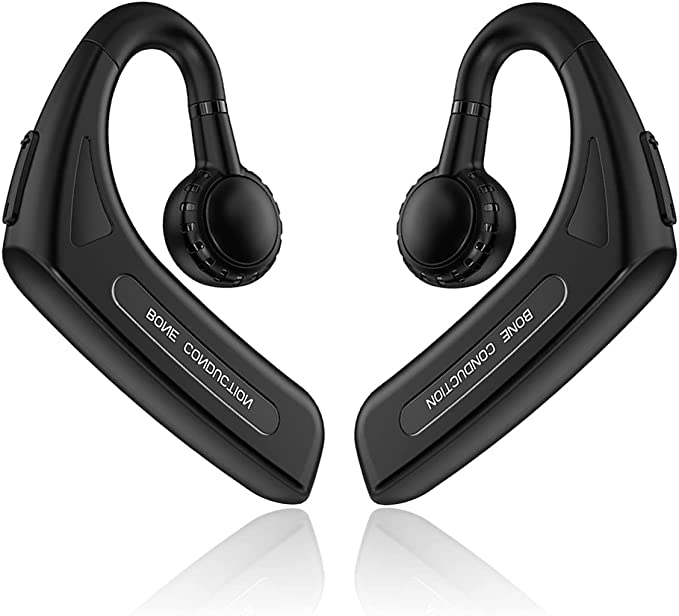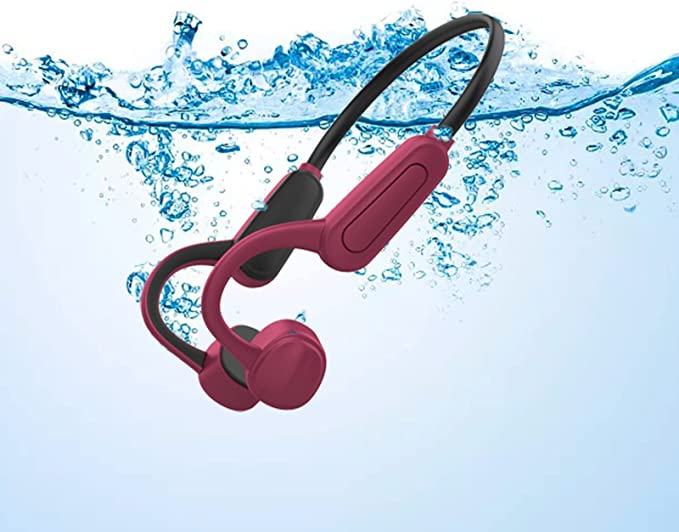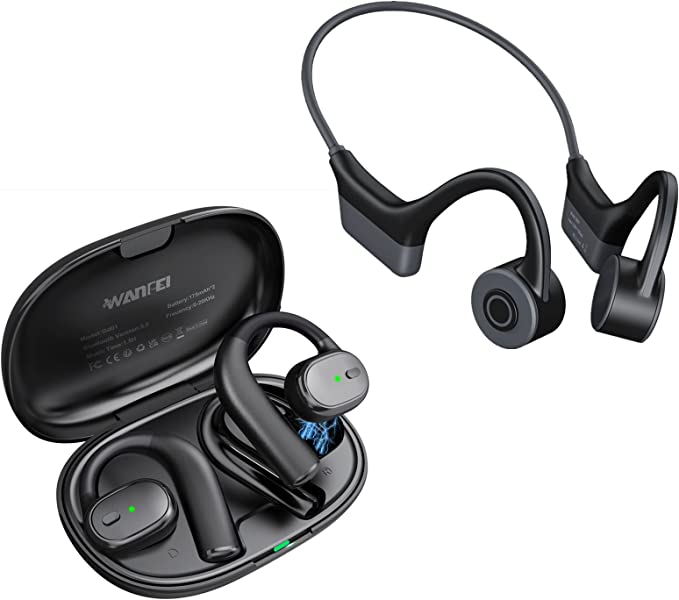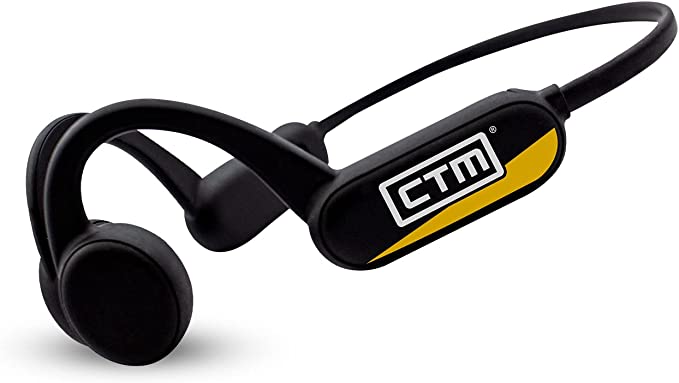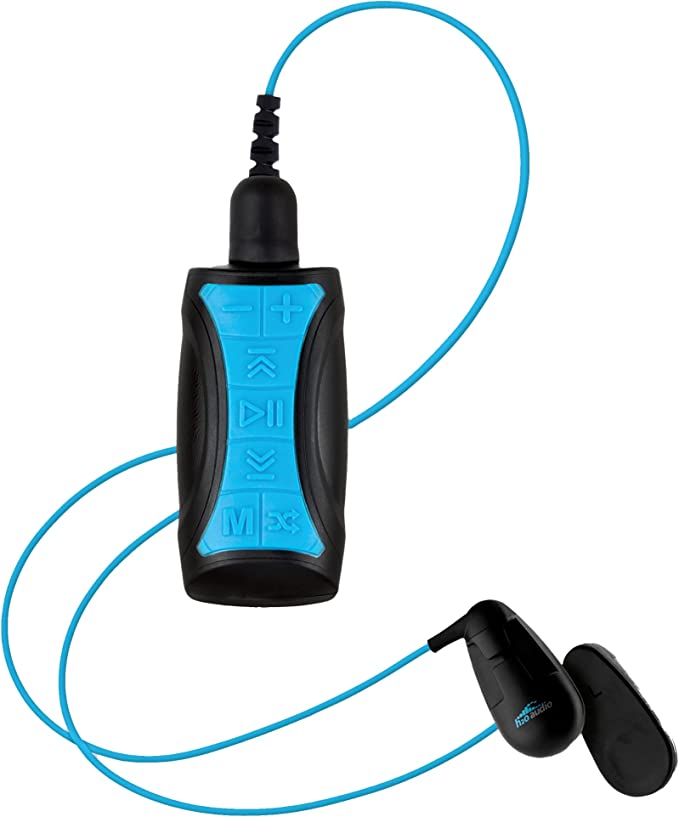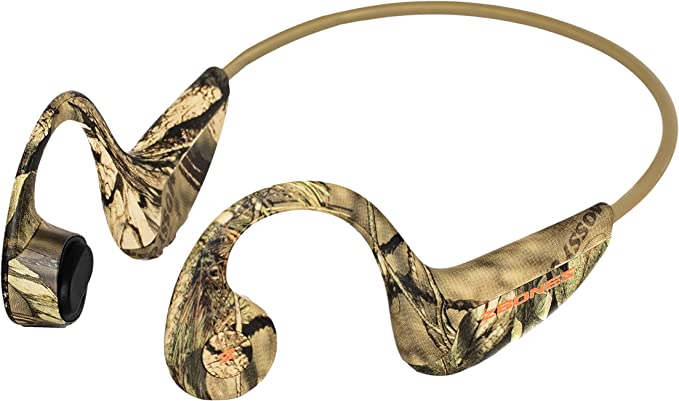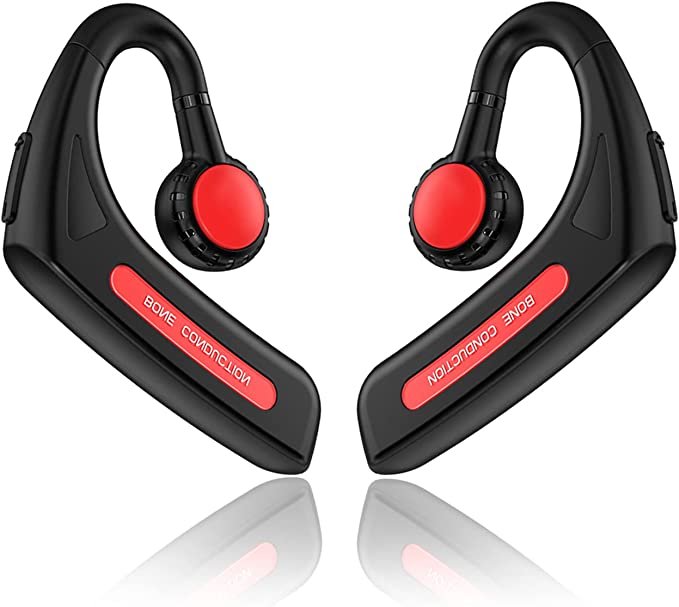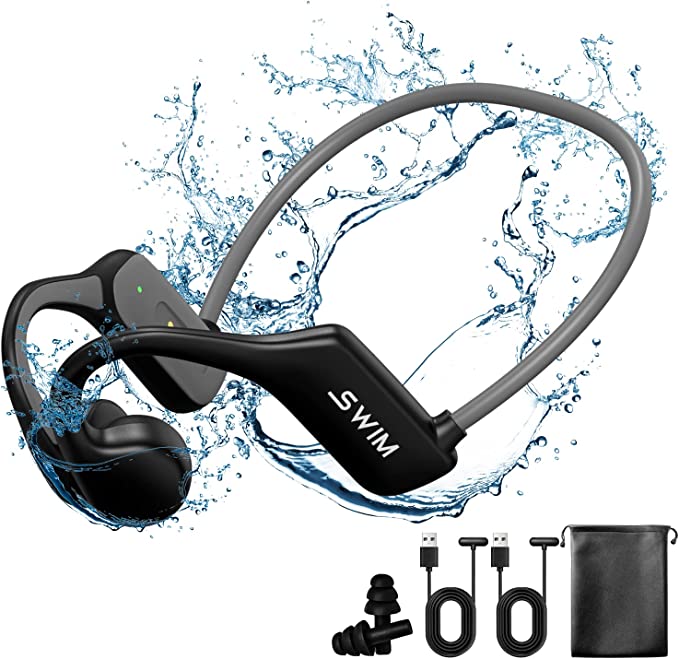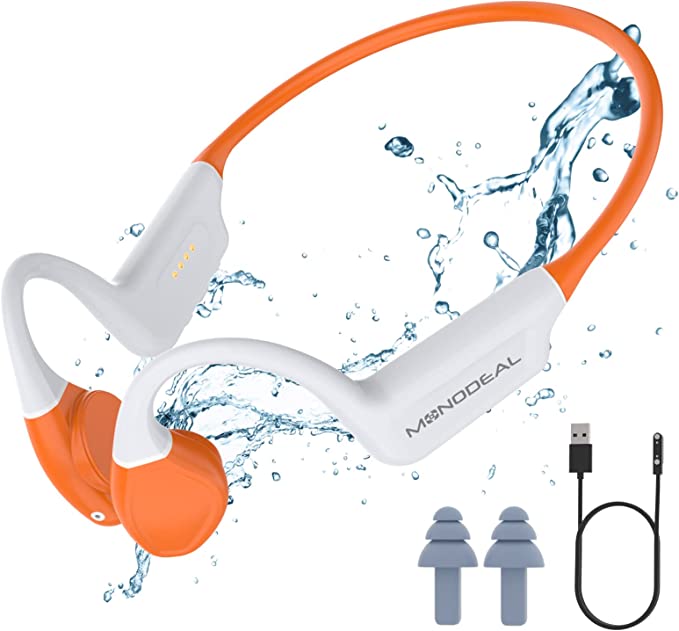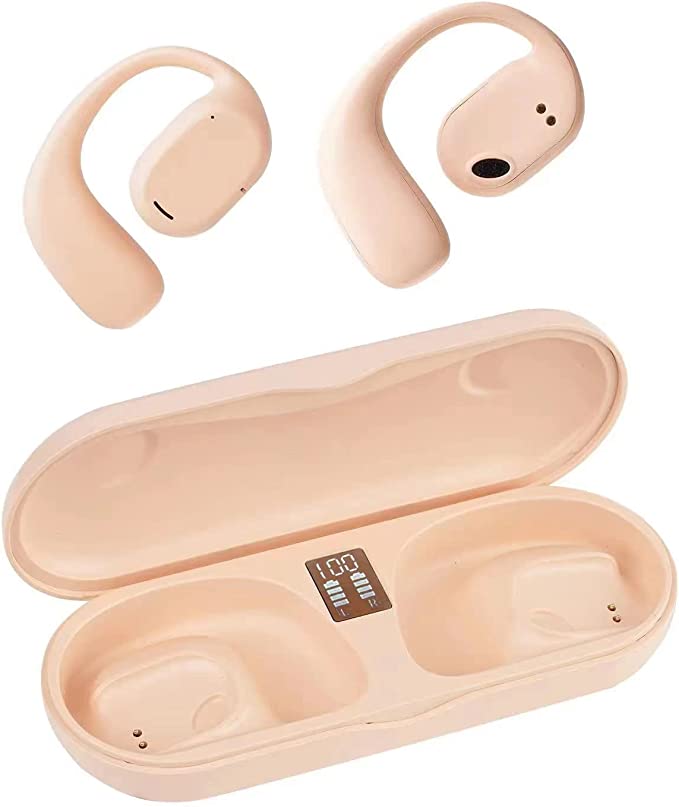FOLEY X7 Bone Conduction Headphones: Affordable yet Limited
Update on June 23, 2025, 9:03 a.m.
The desire to weave a personal soundtrack into the fabric of our active lives is almost universal. Whether pounding the pavement, cycling through scenic routes, or gliding through the cool embrace of a swimming pool, music can be a powerful motivator, a rhythmic companion. Yet, for a long time, an immersive audio experience, especially in a swimmer’s world, felt like a distant dream, fraught with the perils of waterlogged electronics and the isolation of blocked ears. Then came technologies like bone conduction, whispering promises of hearing sound as if by magic, without anything covering the ear canal itself. It’s a concept with a surprisingly long echo in history; even Ludwig van Beethoven, as his hearing waned, reportedly bit down on a rod connected to his piano to feel the vibrations of his compositions. Today, this once niche concept has swum into the mainstream of consumer electronics, particularly for athletes. But does the magic always translate from the lab to the lap lane? The story of the FOLEY X7 Bone Conduction Headphones offers a compelling, if somewhat turbulent, case study.

The Science of a Different Beat: How Bone Conduction Skips the Eardrum
To understand the allure, and the quirks, of headphones like the FOLEY X7, we first need to appreciate how fundamentally different bone conduction is from the way we typically experience sound through headphones. Most audio devices you’ve encountered are, in essence, tiny speakers. They create sound waves that travel through the air in your ear canal, causing your eardrum to vibrate. These vibrations are then passed along by the tiny bones of the middle ear to the cochlea, the snail-shaped organ of the inner ear, which translates them into electrical signals your brain interprets as sound. This is air conduction.
Bone conduction, however, performs an elegant sidestep. Instead of targeting the ear canal, transducers – the parts that create the sound – are placed on the cheekbones, just in front of the ears. These transducers don’t push air; they generate minute mechanical vibrations. Imagine your skull, for a moment, acting as a different kind of soundboard or speaker cone. These vibrations travel through the cranial bones directly to the cochlea, largely bypassing the eardrum and middle ear. It’s a direct line to your inner hearing mechanism.
The immediate, and perhaps most celebrated, promise of this approach is situational awareness. Because your ear canals remain open, you’re not cut off from the world. You can hear an approaching car, a fellow cyclist’s warning, or the ambient sounds of nature. For many outdoor activities, this isn’t just a convenience; it’s a significant safety feature. For some individuals, it also offers superior comfort, especially those who find in-ear buds intrusive or over-ear designs too warm and isolating. It can even be a boon for people with certain types of conductive hearing loss, where the outer or middle ear is the problem.
But this unique pathway isn’t without its own set of inherent trade-offs. The physics of transmitting sound through bone means that achieving a deep, resonant bass response is notoriously challenging. The vibrations required for powerful low frequencies can become uncomfortably palpable if pushed too hard. Furthermore, because the sound isn’t channeled directly into the ear, some “sound leakage” – where people nearby can faintly hear what you’re listening to – can occur, especially at higher volumes.

Crafting the Athlete’s Companion: The FOLEY X7 Blueprint
The FOLEY X7 headphones, on paper, appear thoughtfully engineered to harness bone conduction’s strengths for the active individual, particularly the swimmer. Its feature list reads like an athlete’s wish list. An IPX8 waterproof rating is a headline feature. In the world of Ingress Protection ratings, the ‘X’ means it hasn’t been specifically rated for dust protection (or it’s not relevant), while the ‘8’ signifies it’s suitable for continuous immersion in water under conditions specified by the manufacturer – in this case, the ability to “work underwater.” This is paramount for any device intended for swimming.
However, anyone who has tried to use standard Bluetooth headphones near a pool, let alone in it, knows the frustration. Bluetooth signals, which are a form of radio waves (typically in the 2.4 GHz spectrum), are significantly attenuated by water. Water absorbs these radio waves very effectively, meaning the connection between your phone on the poolside and your headphones quickly drops as you submerge. This is where the FOLEY X7’s 32GB of built-in memory for MP3 playback becomes, theoretically, its masterstroke. By allowing users to load music directly onto the device, it promises a self-contained, phone-free audio experience impervious to Bluetooth’s aquatic limitations. For swimmers, this onboard storage isn’t just a feature; it’s a necessity for an uninterrupted underwater soundtrack.
For dry-land activities, the headphones offer Bluetooth 5.3, the then-current iteration promising stable connections, faster data transfer, and potentially better power efficiency for streaming from your phone, laptop, or tablet. And true to its bone conduction roots, the open-ear design is central, with materials like silicon and “memory titanium alloy” aiming for a secure yet comfortable fit that allows environmental sound in.

When a Promising Blueprint Meets Troubled Waters: The FOLEY X7 User Experience
This is where the narrative often takes a sharp turn in the world of consumer electronics – the chasm between a well-intentioned design and the multifaceted reality of user experience. The FOLEY X7’s Amazon rating, a stark 2.7 out of 5 stars from 23 global ratings at the time of data collection, immediately signals that the voyage for many users was far from smooth sailing.
The Silent Swim - MP3’s Vanishing Act:
Perhaps the most critical blow to the X7’s athletic aspirations, especially for its target swimming audience, lies in the reported failures of its cornerstone MP3 functionality. User Joelle Bell’s detailed account is particularly illuminating: “All 3 of my computers say ‘usb device not recognized’ when I plug in the headphones and I can’t upload my music to the mp3 player?” Despite hours of troubleshooting across multiple machines, the issue remained. This wasn’t a minor glitch; it rendered the primary advertised use-case – listening to music while swimming via internal storage – completely inaccessible for this user. The potential culprits for such a “USB device not recognized” error are numerous, ranging from faulty USB drivers on the computer, firmware bugs within the headphones themselves, a physically damaged USB port or cable (the X7 uses a proprietary magnetic charger that also handles data), to even an issue with the internal storage controller of the headphones. Whatever the cause, for a swimmer who purchased the device specifically for this feature, it’s a deal-breaker.
A Short-Lived Partnership - The Durability Question:
Beyond core functionality, the lifespan of the device also came under fire. Ana Maria Ocampo’s review stated bluntly that after three months of use, the headphones “no volvió a funcionar” (stopped working), elaborating that they wouldn’t charge or be recognized by Windows. This points to potential issues with battery longevity, the integrity of the charging circuitry, or general component failure – all deeply concerning for a product designed for the rigors of an active lifestyle. Kmplawesq, a Vine Voice reviewer, also flagged the proprietary charging cable as a point of concern, a common frustration with specialized connectors if they are lost or damaged, as replacements can be hard to find or costly.
Fumbling in the Dark - The Ergonomic Challenge:
Interacting with the FOLEY X7 also proved problematic for some. Both user “K” and Kmplawesq highlighted that the buttons were “hard to activate” and that switching modes, particularly in MP3 operation, was finicky. Designing controls for a waterproof device often involves a delicate balance. Seals necessary to prevent water ingress can sometimes make buttons less tactile or require more force. However, if the usability is significantly compromised, it detracts from the overall experience, especially mid-workout when fumbling with controls is the last thing an athlete wants.
A Curious Case of Sound: MP3 vs. Bluetooth Fidelity:
An intriguing observation came from Kmplawesq, who noted that “the volume and density of sound of internal music surpasses that which you get through BT streaming.” While bone conduction headphones are not typically lauded for audiophile-grade sound (the user-rated sound quality was a middling 3.4 out of 5, with the common complaint of weak bass), this difference is interesting. It could be due to various factors: perhaps the onboard MP3 decoding chip and amplification pathway are more robust or less subject to compression than the Bluetooth audio stream, or maybe the Bluetooth implementation itself introduces some audio degradation. Without a deeper technical teardown, it remains a curious footnote in the user experience. Despite these issues, comfort received a relatively decent score of 4.0 out of 5, suggesting the physical design and materials were somewhat successful.
The most damning statistic, however, might be the 1.8 out of 5 rating for “Value for money.” This suggests a profound disconnect between the product’s price (unavailable at the time of data, but implied to be non-trivial) and the perceived benefits and reliability delivered.

Beyond a Single Headset: Lessons from the FOLEY X7’s Voyage
The story of the FOLEY X7 isn’t just about one particular set of headphones; it’s a microcosm of the challenges and realities inherent in bringing innovative technology to the consumer market.
The “bleeding edge” of technology, as the saying goes, can indeed be sharp. New features and ambitious designs, especially when combining multiple complex systems like waterproofing, onboard storage, and wireless audio in a compact form factor, carry inherent risks. Early adopters often become unwitting beta testers.
This case also underscores the importance for consumers to look beyond marketing claims and spec sheets. While IPX8 and 32GB MP3 sound fantastic for a swimmer, real-world user reviews often paint a more nuanced, and sometimes harsher, picture of how these features actually perform – or don’t.
For manufacturers, the FOLEY X7’s reception is a potent reminder: core functionality and reliability are non-negotiable. A long list of exciting features means little if the fundamental ones fail or if the device doesn’t last. Rigorous quality control, thorough real-world testing (especially in the intended use environments), and responsive customer support are critical, particularly for devices marketed for demanding conditions. The choice of a proprietary charging/data cable, while perhaps necessary for robust waterproofing, also needs to be weighed against user convenience and the long-term availability of replacements.

Concluding Thoughts: The Evolving Soundtrack of Our Active Lives
Bone conduction technology itself remains a fascinating and genuinely valuable innovation. It offers a unique way to experience audio while staying connected to the world, a benefit that resonates deeply with safety-conscious athletes and individuals with specific hearing needs. Its journey from a medical curiosity to a consumer audio category is a testament to its potential.
The FOLEY X7, as chronicled through its product information and, more critically, user experiences, serves as a poignant cautionary tale. It highlights the often-difficult journey from an innovative concept to a consistently dependable and user-friendly product. The ambition to create the perfect swimmer’s headphone is laudable, but execution, as evidenced by the reported issues with MP3 functionality and durability, fell short for a significant number of users.
Ultimately, the power lies with the informed listener. By understanding the science behind the technology, critically evaluating features against real-world needs, and paying heed to the collective wisdom of user feedback, we can all make more empowered choices in navigating the ever-evolving soundscape of our active lives. The quest for the perfect athletic audio companion continues, and each product, successful or challenged, contributes to the learning curve for both manufacturers and consumers alike.
